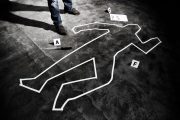
Since the trial of Garcia Zarate began, the jury has been subjected to the testimony of numerous witnesses, including bystanders who were nearby when Kate Steinle was fatally shot on July 1, 2015. Others providing testimonies included police officers and forensic experts. There were cellphone videos showing a figure, presumed to be Zarate, walking away from Steinle immediately following the shooting, and throwing something into the bay. There was an intense interrogation of the off-duty BLM ranger whose weapon, which was stolen from his car four days earlier, was used by Zarate in the shooting of Steinle.
They even heard part of the more than four hours of interrogation of Zarate by police following his arrest.
As the trial enters its final days, the issue is whether the jury thinks Zarate fired the weapon intentionally at people on the pier, or whether it went off accidentally.
Numerous issues have been resolved along the way. Zarate initially claimed that he found the handgun — a 40-caliber Sig Sauer P239 — wrapped up in a T-shirt under a bench on the pier. He claimed that he fired it three times at “a black fish” in the bay. Under further interrogation he said instead that he stepped on the T-shirt accidentally and that the gun wrapped inside went off by itself. Zarate said he threw it into the bay to keep it from continuing to fire. He finally admitted that he fired the weapon, but that it was an accident that the round hit Steinle.
{modulepos inner_text_ad}
When firearms expert Gerald Andrew Smith testified, he pointed out that when he received the weapon, it had just one round missing, which was consistent with the BLM ranger’s claim that he always kept his gun fully loaded. Smith testified further that the only way the firearm could have fired a bullet is if the trigger had been deliberately pressed. In addition it would have taken between five and 10 pounds of pressure on the trigger to fire the weapon. Said Smith: “I found no mechanical issues with the firearm and my opinion is that this gun will fire only when the trigger is pulled.” He added that internal safety mechanisms would have prevented it from firing it if were accidentally dropped.
Additional testimony revealed that the bullet that killed Steinle was deformed and that, upon further investigation, the bullet had struck the surface of the pier, leaving a “strike mark” before hitting her. In addition, testimony from forensic experts showed the bullet traversed a straight line from where Zarate was sitting, bounced off the pier, and then hit Steinle, who was about 90 feet away.
One of the investigators, retired police officer John Evans, added his opinion that inexperienced shooters are often shaky and fire in haste, causing the barrel of the gun to point downward, calling it “jerking the trigger.”
Zarate’s defense attorney, Matt Gonzalez from the public defender’s office, is asking the judge to let members of the jury handle the firearm so they can see for themselves just how little pressure it would take to fire the weapon. Said Gonzalez: “I have handled this very firearm, and the trigger pull is extremely light. Anybody who believes that this gun cannot fire accidentally, that would settle it, I have no doubt.”
That’s a risky gambit, assuming the judge allows members of the jury to handle the firearm. They might just discover why that particular firearm is so popular with law enforcement: It fires only when its operator intends it to fire.
As The New American noted earlier, the judge is making sure that no extraneous issues will clutter the trial, issues such as gun laws, ICE holds, San Francisco being a sanctuary city, and so forth. It’s likely to boil down simply to this: Did Zarate deliberately and intentionally fire the weapon at people, or was it an accident? Is the ricochet enough to support Zarate’s claim that the shooting was an accident, or is the fact that Zarate needed to intentionally pull the trigger to fire the gun, in the direction of Steinle, enough to convict for second degree murder rather than involuntary manslaughter?
Where Zarate spends the next 15 or more years of his life depends on how the jury rules.
Image of Kate Steinle: Screenshot from YouTube video released by CBS News
An Ivy League graduate and former investment advisor, Bob is a regular contributor to The New American magazine and blogs frequently at LightFromTheRight.com, primarily on economics and politics. He can be reached at [email protected].
Related article:



